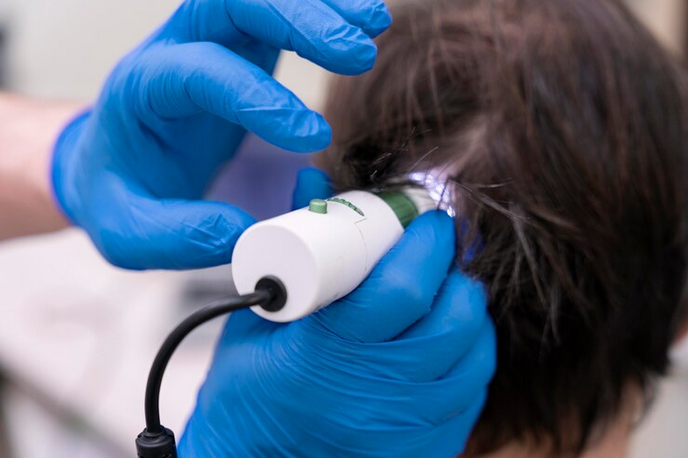Renew, Restore, Regrow: Unlocking the Potential of PRP Injections for Hair Loss
Hair loss is a common concern that affects millions of people worldwide, impacting both physical appearance and self-confidence. While various treatments exist to address this issue, PRP (Platelet-Rich Plasma) injections have emerged as a promising solution for hair restoration. In this comprehensive exploration, we delve into the potential of PRP injections for hair loss, understanding its mechanisms, benefits, and considerations.
Understanding PRP Injections: A Natural Approach to Hair Restoration
PRP injections involve the extraction and concentration of platelets from the patient's own blood, which are then injected into the scalp to stimulate hair growth. Platelets contain growth factors and other bioactive proteins that play a crucial role in tissue repair and regeneration. When injected into the scalp, PRP promotes the proliferation of hair follicle cells, increases blood flow to the scalp, and prolongs the hair growth cycle. This natural approach to hair restoration harnesses the body's healing mechanisms to encourage the regrowth of thicker, healthier hair.
The Science Behind PRP Injections: Stimulating Hair Follicle Activity
The effectiveness of PRP injections for hair loss lies in its ability to stimulate hair follicle activity and promote hair growth. Platelets release growth factors such as platelet-derived growth factor (PDGF), vascular endothelial growth factor (VEGF), and insulin-like growth factor (IGF), which play key roles in hair follicle regeneration. These growth factors promote angiogenesis, collagen production, and cell proliferation, creating an optimal environment for hair follicle nourishment and growth. By delivering a concentrated dose of these growth factors directly to the scalp, PRP injections can revitalize dormant hair follicles and promote the growth of new hair strands.
Benefits of PRP Injections for Hair Loss: Promising Results with Minimal Downtime
One of the primary benefits of PRP injections for hair loss is their ability to deliver noticeable results with minimal downtime. Unlike surgical hair restoration procedures, such as hair transplant surgery, PRP injections are minimally invasive and do not require incisions or anesthesia. Patients can typically resume their normal activities immediately after treatment, with minimal discomfort or side effects. Moreover, PRP injections are suitable for both men and women experiencing various types of hair loss, including male and female pattern baldness, alopecia areata, and telogen effluvium.
Considerations Before Undergoing Treatment: Managing Expectations
Before undergoing PRP treatment for hair loss, it is essential for patients to have realistic expectations about the potential outcomes. While PRP injections can stimulate hair growth and improve hair density, they may not be effective for everyone. Factors such as the extent of hair loss, underlying medical conditions, and individual response to treatment can influence the results. Additionally, multiple treatment sessions may be required to achieve optimal outcomes, with maintenance treatments recommended to sustain the results over time.
Combination Approaches: Enhancing Results with Adjunctive Therapies
In some cases, PRP injections for hair loss may be combined with other adjunctive therapies to enhance results. For example, microneedling, a procedure that involves creating tiny punctures in the scalp to stimulate collagen production, can be performed in conjunction with PRP injections to improve the absorption and efficacy of the treatment. Similarly, topical medications such as minoxidil or finasteride may be prescribed to complement PRP therapy and further promote hair growth. By combining different modalities, healthcare providers can customize treatment plans to address the unique needs and preferences of each patient.
Conclusion: Embracing the Potential of PRP Injections for Hair Loss
In conclusion, PRP injections offer a promising solution for individuals seeking to address hair loss and restore their confidence. By harnessing the regenerative properties of platelets, PRP therapy stimulates hair follicle activity, promotes hair growth, and improves overall hair density. With its minimally invasive nature, minimal downtime, and suitability for various types of hair loss, PRP injections represent a valuable option for both men and women looking to renew, restore, and regrow their hair. As research continues to uncover new insights into PRP therapy, the future holds even greater potential for this innovative approach to hair restoration.





Comments